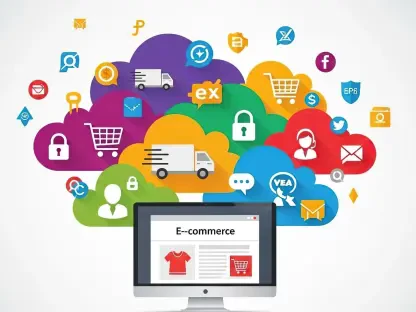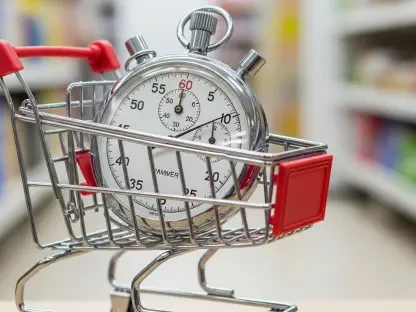Holiday shopping felt joyful yet rushed, nostalgic yet pressured, and the group holding both truths most tightly—Millennial parents—set the tempo for retail as they demanded speed, clarity, and flexible payments while juggling time and budget constraints. This analysis examined how those pressures reshaped channel choices and checkout expectations, drawing on fresh consumer data to explain which levers truly moved conversion. The stakes were high: a season built on sentiment increasingly hinged on seconds saved at the point of payment.
A sharper picture emerged when sentiment was paired with behavior. Most Millennial parents still associated gifting with warmth, but a majority also worried about costs and lost time. That duality did not produce ambivalence; it produced decisiveness. Shoppers rewarded retailers that erased steps, removed lines, and matched payment options to real cash-flow needs. The upshot was clear: convenience became the currency of loyalty, and embedded checkout turned from feature into foundation.
Market Context And Purpose
This market view focused on Millennial parents in the United States, ages 28–44, a cohort with heavy holiday responsibilities and tight time windows. The goal was to translate consumer-reported behaviors into practical signals for retailers, brands, and software providers building embedded checkout. The lens combined attitudinal metrics—joy, stress, budget worries—with operational outcomes like abandonment, channel preference, and payment mix.
Why it mattered was straightforward. The holiday window amplified every point of friction, and shoppers measured experiences by how quickly they could pay and move on. Moreover, the rapid normalization of digital wallets, contactless methods, and installments compressed the gap between elite and everyday checkout. The category that once differentiated on price and product now competed on speed and simplicity.
Demand Dynamics And Seasonal Pressure
The season’s emotional lift stayed strong, yet constraints dominated purchase mechanics. A large majority described holidays as joyful and nostalgic, but nearly three quarters worried about staying within budget, and many felt stressed by tasks such as hunting for the right gift or queuing in-store. Time scarcity cut both ways: even online shopping strained schedules, reinforcing that convenience mattered across channels, not just at the register.
This pressure translated into defined expectations for “best” experiences. Shoppers overwhelmingly valued pay-and-go speed and were explicit about the value exchange: a notable share said they would pay more for convenience. Those sentiments flowed directly into behavior, as long lines and clunky forms triggered abandonment. In short, demand did not soften; tolerance for friction did.
Checkout Experience As Competitive Advantage
Checkout design became the conversion engine. Four datapoints told the story: most respondents wanted time-saving perks like line-skipping and modern payment options; most would choose a retailer with line-skipping over one without; over half abandoned in-store because of lines; and more than half quit online carts due to clunky flows. These behaviors clarified why queue length and clicks-to-pay were now revenue metrics, not operational footnotes.
The spillover effects were equally important. Frictionless tools shaped channel intent: shoppers were more likely to buy online when one-click or wallet options appeared early, and more likely to shop in-store when mobile and contactless payments were visible and reliable. Retailers gained three benefits when they delivered: higher throughput, fewer drop-offs, and permission to charge for premium service tiers—fast lines, reserved pickup windows, or guaranteed slots.
Budgets, Payment Mix, And Behavioral Shifts
Economic pressure pushed shoppers to stretch dollars and smooth cash flow. Many were thrifting or DIYing gifts, and a meaningful share reported taking on extra work to afford holiday spending. That reality drove adoption of BNPL and digital wallets, used to track purchases, control fees, and line up payments with income. Flexibility was not a luxury for this cohort; it was a coping mechanism that supported both discipline and delight.
Risks surfaced when deferred payments lacked transparency or when channels fractured experiences—e.g., installments online but not in-store, or wallets accepted at one location and rejected at another. The opportunity was to pair flexibility with clarity: total cost upfront, payment schedules, reminders, and simple guardrails. Done well, flexible payments increased completion without eroding trust.
Segmentation: Three Distinct Shopper Modes
Personas sharpened strategy. Efficiency Elves—often dads and higher earners—embraced tech-forward convenience, favoring frictionless online checkout, subscriptions, and AI-driven recommendations. This group was more comfortable with contactless and automation, and it responded well to premium speed features.
Holiday Hustlers—single parents, mothers, younger Millennials, and lower earners—faced the harshest budget stress. They leaned on comparison tools, promotions, and flexible plans, and were more likely to thrift or DIY. For them, transparency and predictability outweighed novelty; checkout needed to be fast and crystal clear about costs.
Tradition Treasurers—partners, dads, and older Millennials—valued the in-store ambiance and local impact, often treating shopping as a family ritual. Yet they still expected modern speed at the register. Human help and local pride drew them in; line-skipping, mobile POS, and contactless kept them from walking out.
Small Business Parity And Local Nuance
Consumers increasingly expected small retailers to match big-box capabilities. A large majority wanted local shops to offer the same payment options—including BNPL—and the tech to eliminate waiting. The gap narrowed as embedded checkout, cloud POS, and tap-to-pay on consumer devices reached independents, leveling the field without enterprise budgets.
Regional differences and network acceptance still influenced adoption curves, but mobile-first platforms reduced variability. Three misconceptions deserved correction: frictionless was not an online-only issue; time savings mattered to all income tiers; and modern checkout did not dilute holiday spirit. In fact, most respondents said easier tech preserved the season’s positive feelings by removing anxiety from the journey.
Outlook And Projections
Several trends defined the near-term trajectory. Checkout became embedded everywhere: mobile POS, QR-triggered self-checkout, and tap-to-pay on phones turned every aisle into a lane. Wallet-first design accelerated, with network tokens, passkeys, and prefilled data reducing steps and shrinking fraud without visible friction. Flexible payments moved up-funnel, coupled with budgeting cues and transparent terms.
Operational intelligence took center stage. Queue forecasting, dynamic staffing, and virtual line-skipping reduced perceived and actual waits. Omnichannel continuity matured as saved carts, instant tap-to-collect, and unified rewards smoothed handoffs. On the policy front, potential shifts around installments, privacy, and routing could nudge cost structures, but the direction held: approvals got faster, forms got shorter, and prompts became context-aware.
Strategic Implications For Retailers And Builders
Execution hinged on targeting friction where it hurt most. In-store, roving associates with mobile POS, visible contactless acceptance, and app-based virtual queues cut abandonments. Online, fewer fields, inline validation, wallet prominence, and redirect-free flows reduced drop-off. Measurement mattered: queue length, dwell time, funnel attrition, and abandonment reasons became the dashboard staples.
Payment breadth needed to be the default, not a banner at the final step. Digital wallets, contactless, BNPL, and smartwatch pay should be supported across channels and surfaced early. Experiences required persona-aware emphasis without splintered interfaces: one-tap and subscriptions for Efficiency Elves; transparent pricing and flexible plans for Holiday Hustlers; ambiance, associate help, and lightning-fast checkout for Tradition Treasurers. For independents, embedded SDKs and cloud POS delivered parity, while standardizing receipts, returns, and loyalty protected trust.
Closing Perspective
The market analysis showed that Millennial parents blended nostalgia with pragmatism and rewarded brands that respected both time and budget. Line reduction, wallet-first flows, and clear flexible payments emerged as the decisive levers for conversion, not optional enhancements. Retailers that instrumented queues, unified payment options across channels, and tuned checkout for distinct shopper modes captured outsized share. The next steps were practical: deploy mobile POS, elevate wallets and one-click, make installments transparent, and stress-test capacity before peak days. Those moves turned speed into loyalty and, more importantly, kept the season’s promise intact.









